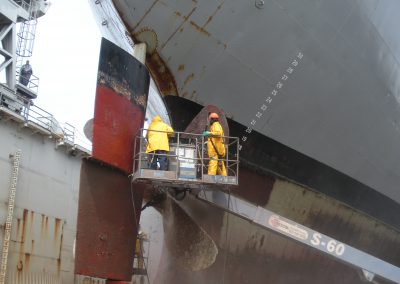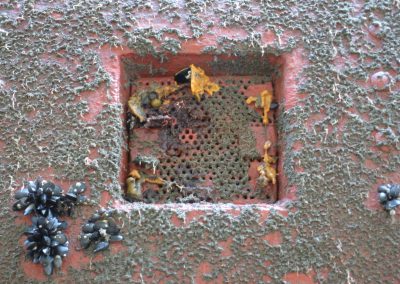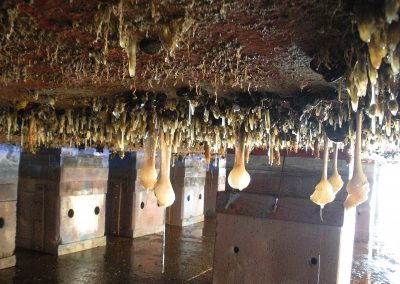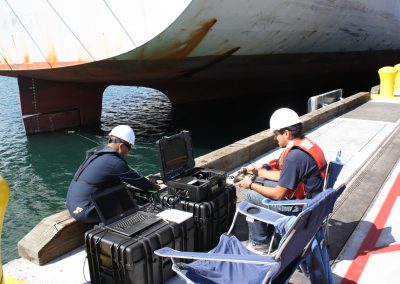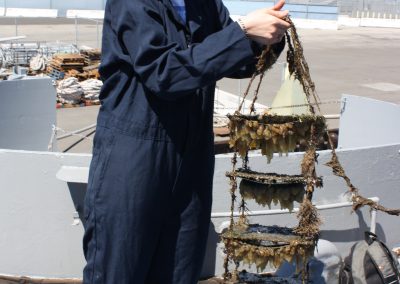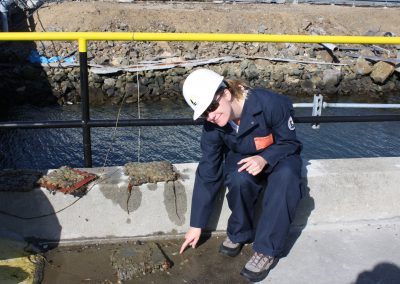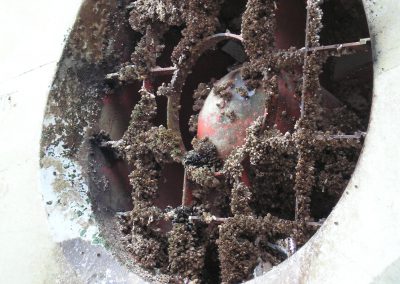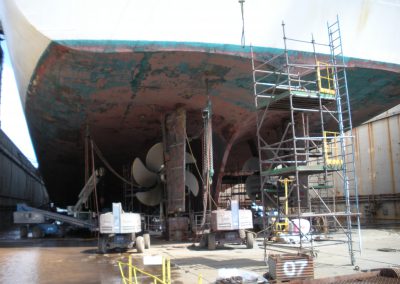This is a collection of questions that have been asked about the implementation of new ballast water discharge performance standards regulations in California.
Frequently Asked Questions
California’s Performance Standards for Ballast Water Discharges
Q 1. What are performance standards for ballast water discharges?
Performance standards for ballast water discharges are the allowable number or organisms per unit volume in discharged ballast water.
Q 2. Are the California performance standards for ballast water discharges the same as the federal standards implemented by the U.S. Coast Guard (USCG)?
Yes, California recently adopted the federal standards enforced by the USCG and found in Title 33 of the Code of Federal Regulations (CFR) section 151.2030. California’s implementation schedule is also the same as the schedule found in 33 CFR 151.2035. (See Cal. Code Regs., tit. 2, § 2293.)
Q 3. Are the California performance standards for ballast water discharges the same as the IMO D-2 discharge standards?
Yes, California’s standards are numerically the same as the IMO D-2 standards. (See Cal. Code Regs., tit. 2, § 2293.)
Q 4. Are California’s performance standards for ballast water discharges part of the U.S. Vessel Incidental Discharge Act (VIDA) or the Vessel General Permit?
No, California’s performance standards for ballast water discharges are independent of VIDA and the Vessel General Permit.
Q 5. What are the System Design Limitations (SDLs) for ballast water treatment systems (BWTS) and where can they be found?
“System Design Limitations” or “SDLs” are the physical or operational parameters important to the proper operation of the BWTS and designed to achieve the discharge performance standards (for example, minimum and maximum flow rates, time between ballast uptake and discharge, water quality limitations, operating environmental conditions, filter pressure, or ultraviolet transmittance). SDLs are found in the USCG Type Approval certificate issued for approved BWTS.
Q 6. Does California require BWTS biological monitoring?
No. Although other jurisdictions may require biological testing or monitoring, California does not. However, if the vessel has performed any biological monitoring, the records must be kept on board and made available during inspection. (Cal. Code Regs., tit. 2, § 2297.)
Applicability and Implementation
Q 7. Which vessels are subject to the California performance standards for ballast water discharges? ( Cal. Code Regs., tit. 2, §§ 2291, 2293.)
All vessels discharging ballast water in California are subject to the performance standards for ballast water discharges unless the vessel:
- is operating under a current extension to their USCG compliance date or are using a USCG-allowed Alternative Management System (AMS) within five years after the expiration of their original or extended compliance date; or
- is operating under an approved or allowed alternative method of management (see Q 8. below).
Q 8. What is an “Alternative Management System (AMS)?
As defined in the USCG’s Ballast Water Frequently Asked Questions (Revised November 3, 2021), an AMS is a BWTS that has been approved by a foreign administration. To receive the AMS determination, the BWTS had to be installed prior to the availability of Coast Guard type approved BWTS and before the vessel’s compliance date as specified in the implementation schedule (see 33 CFR 151.2035(b)). An AMS can be used on a vessel for up to five years after the vessel would otherwise be required to comply with the discharge standard.
Q 9. Do vessels with an AMS installed prior to an original or extended compliance date need to meet California’s performance standards for ballast water discharges?
Vessels that install an AMS prior to their original or extended compliance date can use the AMS for up to five years after the original or extended compliance date and will not need to meet the standards. (See 33 CFR 151.2025(a)(3) and 33 CFR 151.2026(c).
Q 10. Does California require specific technology to be used to meet the California performance standards for ballast water discharges?
California does not require the use of any specific technology to meet the performance standards. Although the USCG may require the use of type approved technologies, that is not a California requirement.
Alternatives and Use of Water from a Public Water System (PWS)?
Q 11. What should vessels do if they are planning on discharging ballast water in California and the onboard BWTS is not operating properly?
If the vessel’s BWTS is not operating properly and the vessel intends to discharge at a California port, the vessel must notify the Commission as soon as possible to request an alternative management method. Notifications must be sent to cslc.mepdmisp@slc.ca.gov.
Q 12. Can the vessel use water from a Public Water Source (PWS) as an alternative to meeting the performance standards for ballast water discharges?
Yes, a PWS is an alternative that can be used to satisfy California’s requirements if the requirements for using a PWS are met. The requirements include maintaining a receipt, invoice, or other documentation recordings which PWS was used and evidence that the ballast tanks and supply lines were cleaned before using a PWS. (See 2 Cal. Code Regs., tit. 2, § 2296). PWS is defined in Cal. Code Regs., tit. 2, § 2292, subd. (j).
Violation and Penalties
Q 13. Will California issue violations or penalties if the vessel is found non-compliant?
If a violation is detected during an inspection, Commission staff will note the violation(s) on inspection reports and a letter will be sent to the vessel owner. However, until enforcement regulations are amended to codify the enforcement process and penalty amounts for each violation type, the Commission does not expect to pursue monetary penalties.
Q 14. When are the enforcement regulations expected to be implemented?
Commission staff is working to develop proposed amendments to the enforcement regulations and will notify interested parties when the public rulemaking process begins.
Recordkeeping and Ballast Water Treatment System Performance Requirements
These documents and records must be kept onboard the vessel and be available during inspections. Effective January 1, 2022, the records must be maintained on board for 2 years. The records will be used to assess compliance with the corresponding laws.
| Required Records | Corresponding Law(s) |
|---|---|
|
Copy of 1 of the following:
|
Cal. Code Regs., tit. 2, § 2297, subd. (c)* |
| Manufacturer’s technical guides and publications for the vessel’s BWTS. For example, the OPERATION, MAINTENANCE, and SAFETY MANUAL (OMSM). | Pub. Resources Code, § 71205, subd. (h)** |
|
Records of the following:
|
Cal. Code Regs., tit. 2, §§ 2295, 2297, subd. (a)* Pub. Resources Code, § 71205, subd. (h)(4)(D)** |
| Printed or electronic records of any Biological Monitoring including the dates, who performed the tests, and testing methods. | Cal. Code Regs., tit. 2, § 2297 (b)* |
| Printed or electronic records of the procedures to follow in case of BWTS malfunction. |
Cal. Code Regs., tit. 2, § 2297, subd. (d)* Pub. Resources Code, § 71205, subd. (h)(4)(B)** |
| Printed or electronic Material Safety Data Sheets (MSDS) for any chemicals used as part of the BWTS process. MSDS are now called Safety Data Sheets (SDS). | Pub. Resources Code, § 71205, subd. (h)* |
| Printed or electronic records having the DATE, TIME, AND LOCATION of the starting and stopping of the BWTS for the purpose of treating ballast water. |
Cal. Code Regs., tit. 2, § 2297* Pub. Resources Code, § 71205, subd. (h)* |
| Printed or electronic records of any scheduled or unscheduled system maintenance events. | Pub. Resources Code, § 71205, subd. (h)* |
Information & Resources
- Other Programs & Partners
- Reports, Research, & Presentations
- California Vessel Activity Data Summaries
- Pacific States Vessel Activity Data Summaries


